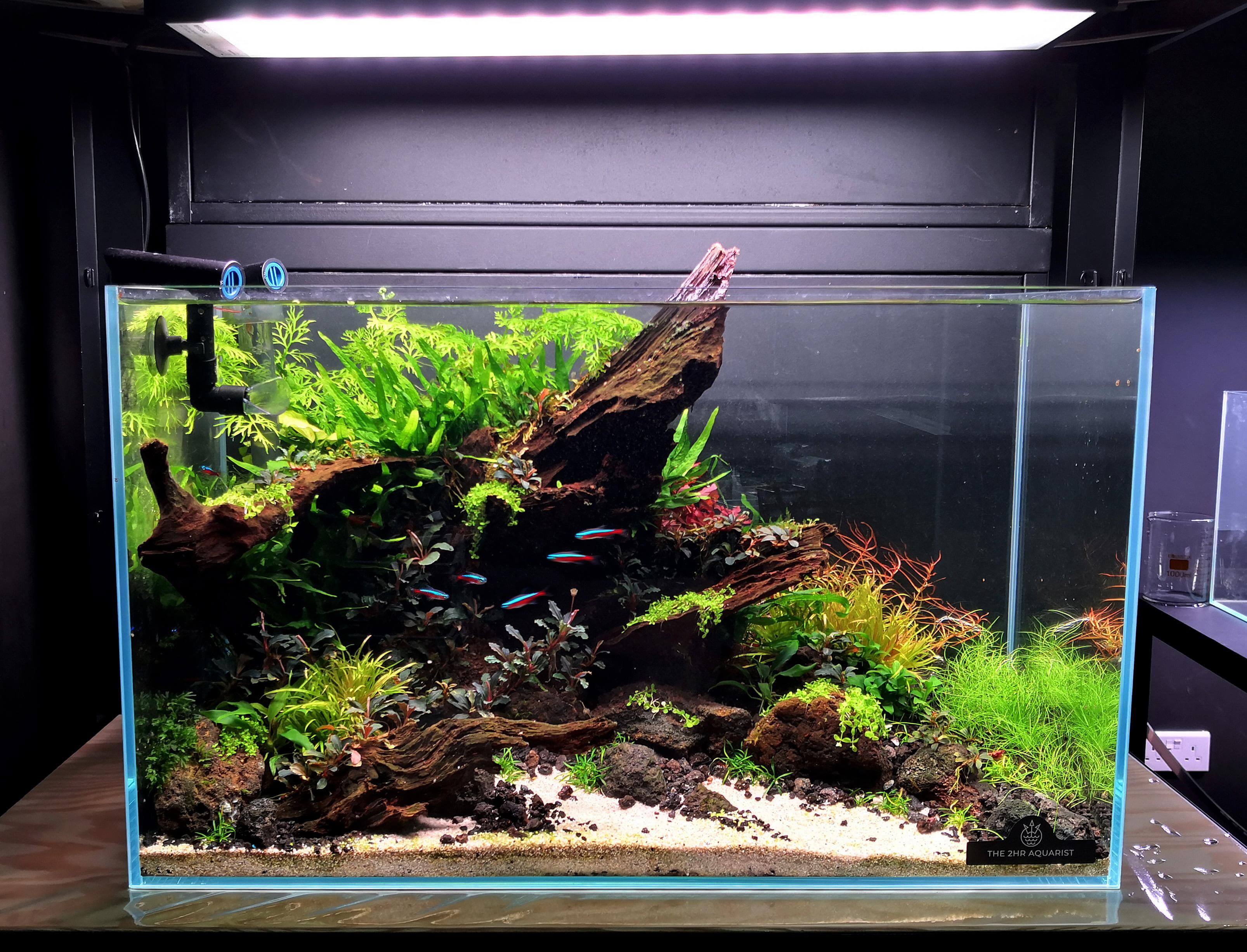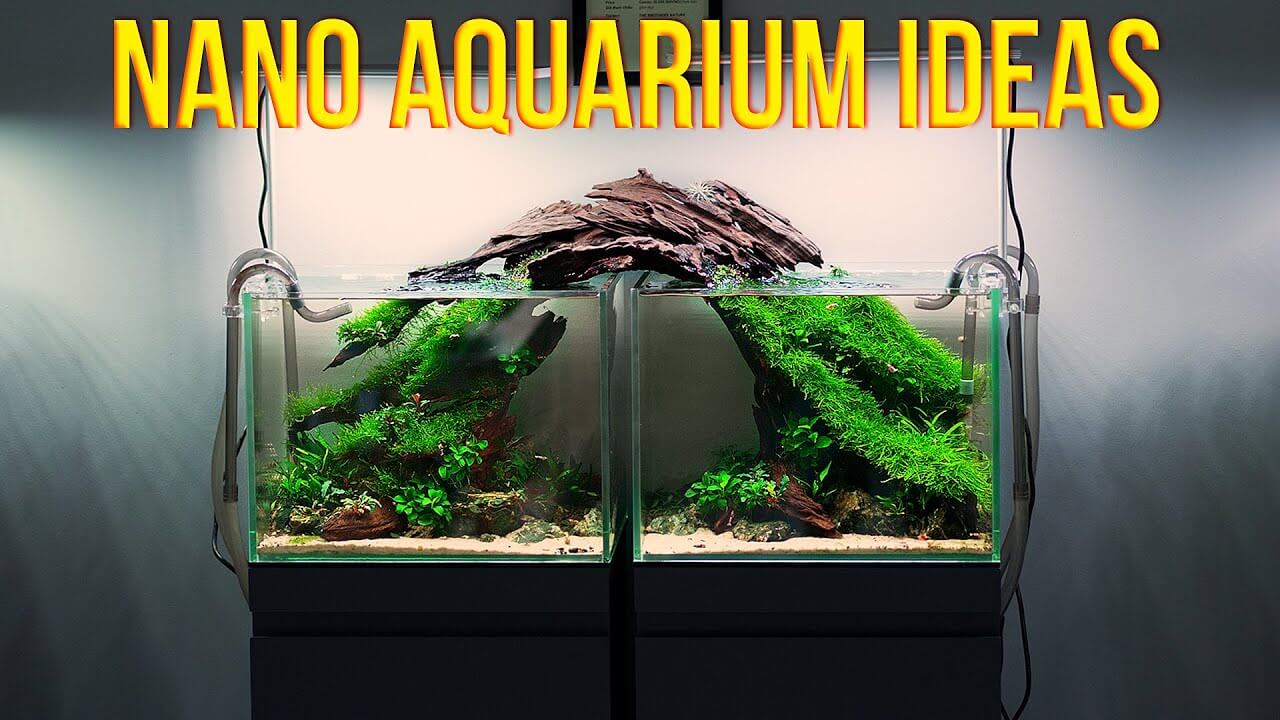Have you ever dreamed of creating a lush, vibrant underwater garden but felt overwhelmed by where to start? Imagine your aquarium as a tank and a canvas for nature’s artistry, where every plant plays a part in a living masterpiece. How can you unlock the secrets to a thriving, plant-heavy aquascape that captivates and soothes the soul?
Welcome to Dutch aquascaping, a unique and mesmerizing style that has captivated aquascapers for almost 80 years. Known for its plant-heavy layouts and meticulous attention to detail, Dutch aquascaping allows you to create a stunning underwater landscape that rivals the beauty of any natural ecosystem.
In this guide, I will take you through the critical elements of Dutch aquascaping, from the strategic use of plant variety and contrast to the artful arrangement of plants for symmetry and balance. You will learn about the top plants commonly used in Dutch aquascapes and techniques for designing your plant layout to achieve depth and dimension. We will also delve into essential maintenance tips to keep your aquascape thriving and strategies for managing algae growth.
Whether you’re a seasoned aquascaper or just starting, this guide will provide you with the knowledge and inspiration to create your masterpiece of Dutch aquascaping.
Key Takeaways:
- Dutch aquascaping focuses on creating a visually stunning and highly aesthetic layout with various aquatic plants.
- Critical elements of a Dutch aquascape include strong contrast between plant groups, distinct groups and clear layout, and variation in height and leaf size.
- When selecting plants, consider growth rate, colour, and form to achieve a balanced and harmonious aquascape design.
- The layout of your Dutch aquascape should include a focal point, planting streets and pathways, and the incorporation of hardscape elements.
- Proper lighting, fertilization, and maintenance techniques are crucial for ensuring the health and longevity of your Dutch aquascape.
- What Makes Dutch Aquascaping Unique?
- Key Elements of a Dutch Aquascape
- Selecting Plants for Your Dutch Aquascape
- Top Plants for Dutch Aquascapes
- Designing Your Plant Layout
- Aquascaping Techniques for a Lush Layout
- Lighting and Fertilization Techniques
- Maintenance Tips for Dutch Aquascapes
- Algae Management Strategies
- Inspirational Dutch Aquascape Designs
- Case Studies of Award-Winning Dutch Aquascapes
- Incorporating Dutch Principles in Small Tanks
- FAQ
- Source Links
What Makes Dutch Aquascaping Unique?
Dutch aquascaping stands out among other aquascaping styles due to its distinctive characteristics. Let’s explore what sets Dutch aquascaping apart and makes it truly unique.
Focus on Plant Variety and Contrast
A fundamental aspect of Dutch aquascaping is incorporating a wide range of plant species in the layout. The goal is to create a visually stunning display using plants of different sizes, shapes, and colours. This abundance of plant variety adds depth and complexity to the aquascape, showcasing the beauty of nature at its finest.
Strategic Use of Color and Texture
In Dutch aquascapes, colour and texture are crucial in creating a captivating visual impact. By carefully selecting plants with contrasting hues and contrasting textures, aquascapers can establish a dynamic and vibrant composition. This deliberate approach to colour and texture creates an eye-catching display that draws viewers in and evokes a sense of awe.
Emphasis on Symmetry and Balance
Symmetry and balance are vital principles in Dutch aquascaping. Using symmetrical plant arrangements and a balanced distribution of visual elements helps create a sense of harmony and tranquillity within the aquascape. This careful attention to symmetry and balance showcases the meticulous craftsmanship of the aquascaper and adds an element of serenity to the overall composition.
To fully appreciate the distinctiveness of Dutch aquascaping, let’s take a closer look at the key elements that define this captivating style.
Key Elements of a Dutch Aquascape
When creating a Dutch aquascape, several vital elements contribute to its unique and visually stunning aesthetic. This section will explore three essential elements that define a Dutch aquascape: strong contrast between plant groups, distinct groups and clear layout, and height and leaf size variation.
Strong Contrast Between Plant Groups
A strong contrast between plant groups is vital for creating an eye-catching and dynamic composition in a Dutch aquascape. By pairing plants with contrasting colours, textures, and shapes, you can create visual interest and focal points within the aquascape. For example, combining vibrant green plants with deep red or purple ones can create a striking contrast that draws attention to specific areas.
Distinct Groups and Clear Layout
Another essential element of a Dutch aquascape is using distinct plant groups and a straightforward layout. Grouping plants of the same species creates a sense of cohesion and allows for easier maintenance and pruning. Additionally, a well-defined layout with defined pathways and open spaces enhances the overall aesthetics of the aquascape and helps create a sense of depth and perspective.
Height and Leaf Size Variation
Varying the height and leaf size of the plants in your Dutch aquascape adds depth and dimension to the overall design. Mixing plants with different heights, such as tall background plants, medium-sized midground plants, and low-growing foreground plants, creates a visually appealing arrangement that mimics the natural environment. Additionally, incorporating plants with various leaf sizes and shapes adds visual interest and texture to the aquascape.
To create a harmonious and captivating Dutch aquascape, it is crucial to consider these key elements and carefully choose and arrange your plants. Your Dutch aquascape will flourish and stand out as a stunning aquatic masterpiece by achieving a solid contrast between plant groups, creating distinct groups and a clear layout, and incorporating height and leaf size variation.
Selecting Plants for Your Dutch Aquascape
Imagine your aquarium as a tank and a canvas for nature’s artistry, where every plant plays a part in a living masterpiece. With Dutch aquascaping, you can unlock the secrets to a thriving, plant-heavy aquascape that captivates and soothes the soul.
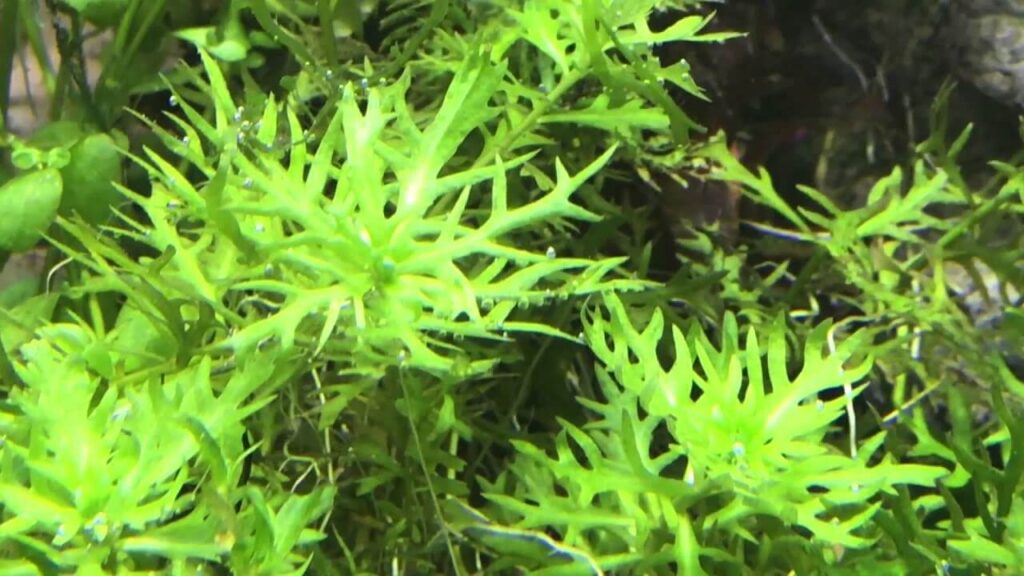
Dutch aquascaping focuses on creating a visually stunning and highly aesthetic layout using various aquatic plants. This style has been around for nearly 80 years and is known for its meticulous attention to detail and plant diversity.
When designing your Dutch aquascape, a few key elements must be considered. The strong contrast between plant groups, distinct groups’ clear layout, and variations in height and leaf size are critical factors in achieving the desired look.
But where do you start when selecting the right plants for your Dutch aquascape? We will explore the top plants commonly used in Dutch aquascapes and provide tips for designing your plant layout.
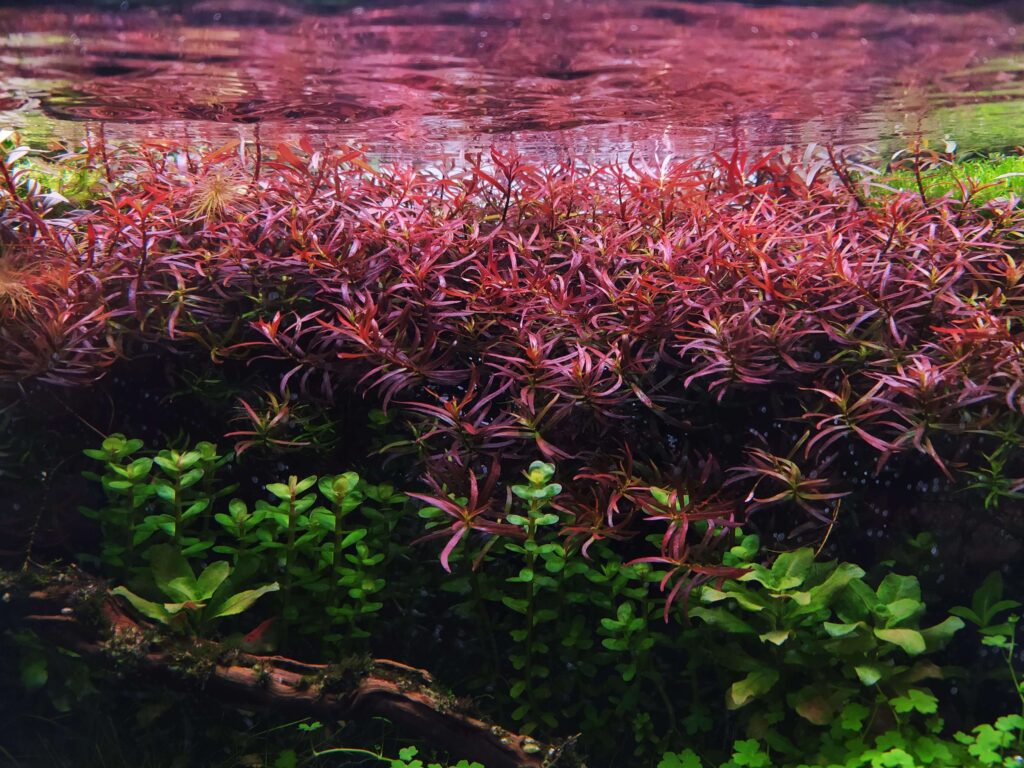
Once you have chosen your plants, it’s time to think about the layout. Creating a focal point, planting streets and pathways, and incorporating hardscape elements can all add depth and visual interest to your aquascape.
Now that you have the foundation of your Dutch aquascape, it’s essential to understand the techniques to help you achieve a lush and visually striking layout. Layering, depth, and proper lighting and fertilization techniques are necessary for creating a successful Dutch aquascape.
Of course, proper maintenance is critical to keeping your Dutch aquascape healthy and thriving. Regular pruning and care, as well as effective strategies for managing algae growth, will help ensure the longevity of your aquatic masterpiece.
To inspire you in your Dutch aquascaping journey, we will showcase some award-winning Dutch aquascapes and provide tips for incorporating Dutch principles into small tanks. Whether a beginner or a seasoned aquascaper, these designs will ignite your creativity.
Top Plants for Dutch Aquascapes
When creating a stunning Dutch aquascape, selecting the right plants is essential. Here are some top plant choices that are commonly used to achieve the desired aesthetic:
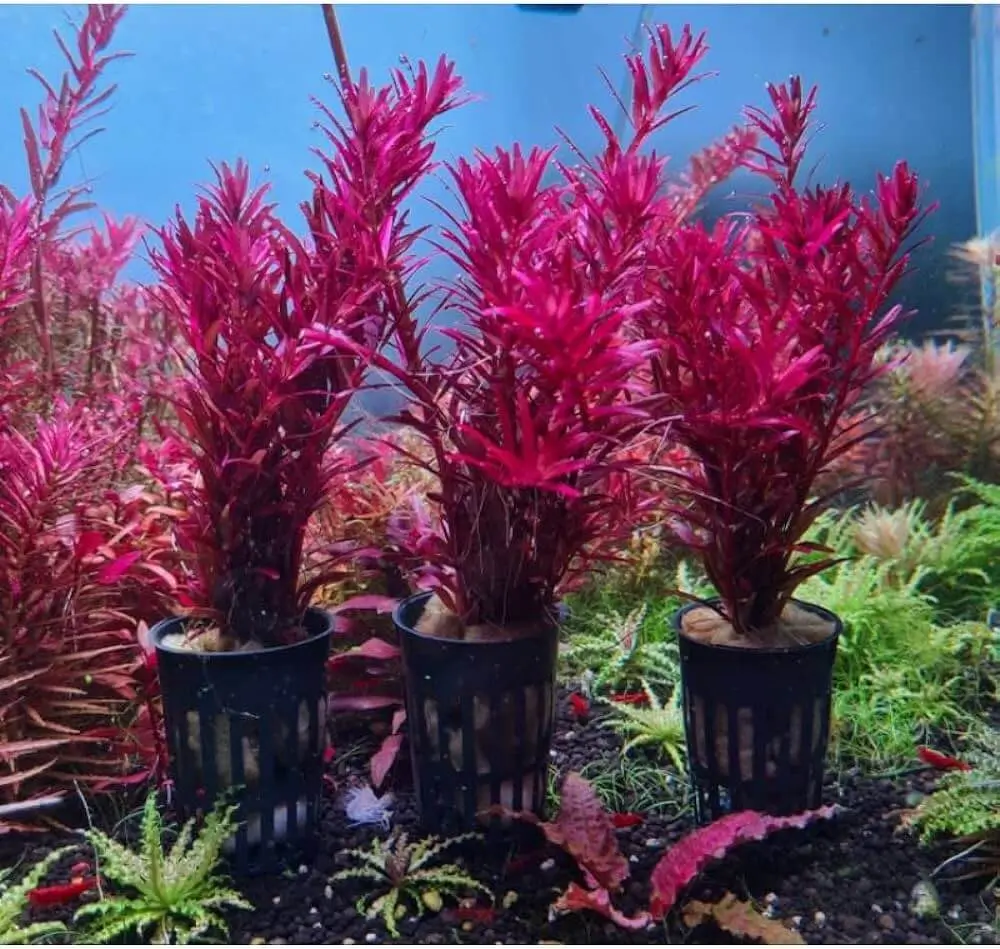
Rotala rotundifolia
Rotala rotundifolia is a versatile plant that adds vibrant colour and texture to Dutch aquascapes. With its lush green foliage and delicate, feathery leaves, this plant creates a beautiful contrast and adds depth to the layout.
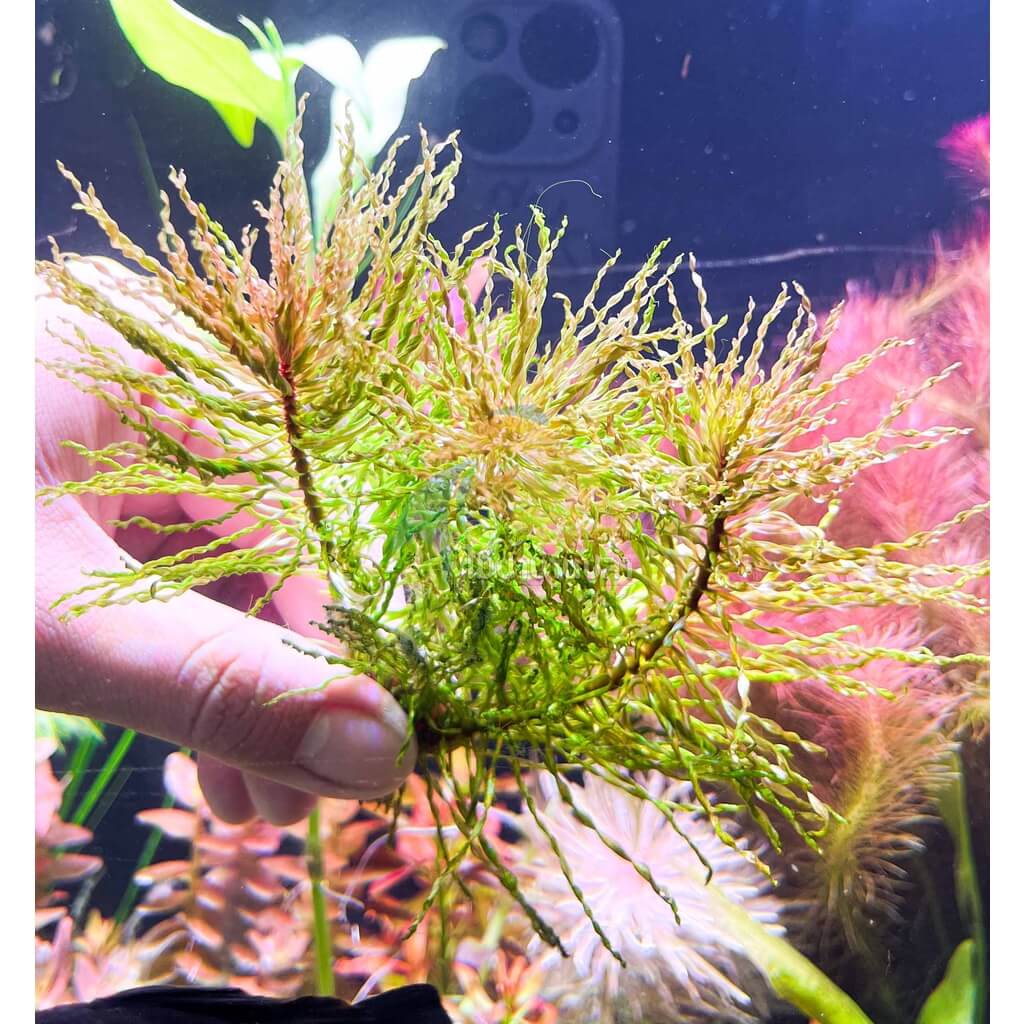
Ludwigia inclinata Pantanal
Ludwigia inclinata Pantanal is a stunning red plant that adds bold colour to Dutch aquascapes. Its vibrant shades of red and pink create an eye-catching focal point and enhance the overall visual appeal of the layout.
Alternanthera reineckii ‘mini’
Alternanthera reineckii ‘mini’ is a compact plant with vibrant red and purple hues. Its small size makes it perfect for foreground planting, adding depth and dimension to the aquascape. This plant is prized for its ability to create visually striking contrasts within the layout.
Cryptocoryne wendtii
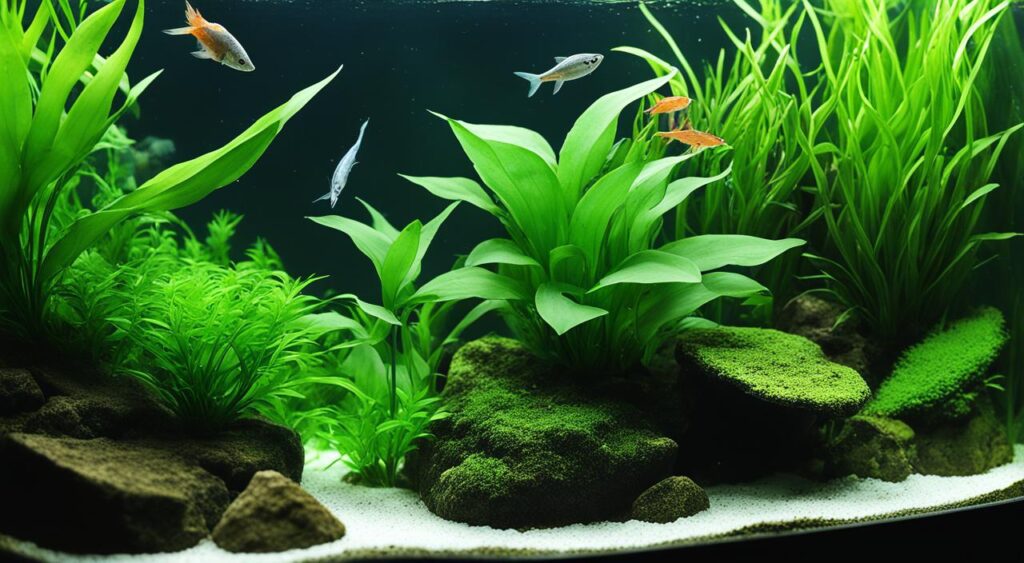
Cryptocoryne wendtii is a popular choice for Dutch aquascapes due to its hardiness and versatility. Its broad, wavy leaves and varying shades of green provide a natural and lush look to the layout. This plant is ideal for midground or background placement.
Staurogyne repens
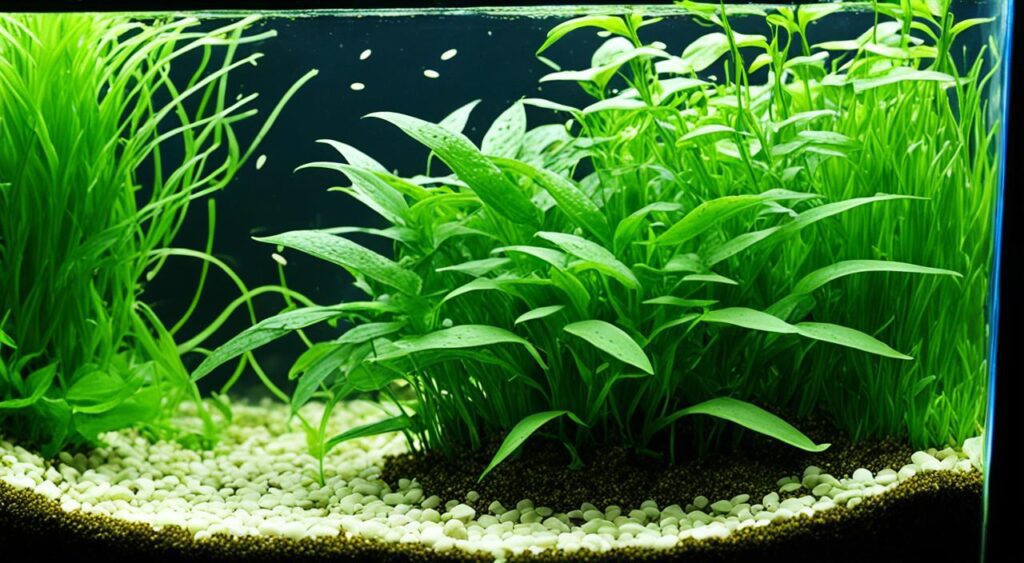
Staurogyne repens is a low-growing plant that adds a carpet-like effect to Dutch aquascapes. Its vibrant green foliage and compact growth create a lush and cohesive look. This plant is often used to create pathways and enhance the overall visual flow of the layout.
| Plant | Main Characteristics | Recommended Placement |
|---|---|---|
| Rotala rotundifolia | Bold red colour, eye-catching | Background |
| Ludwigia inclinata Pantanal | Bold red colour, eye-catching | Foreground, midground |
| Alternanthera reineckii ‘mini’ | Compact size, vibrant red and purple hues | Foreground |
| Cryptocoryne wendtii | Broad wavy leaves, varying shades of green | Midground, background |
| Staurogyne repens | Low-growing, vibrant green foliage | Foreground |
Designing Your Plant Layout
In Dutch aquascaping, designing the layout of your plants is an essential step in creating a visually stunning and balanced aquascape. By strategically arranging your plants, you can create a focal point, establish pathways, and incorporate hardscape elements to enhance the overall aesthetics of your tank.
Creating a Focal Point:
To create a focal point in your Dutch aquascape, select a visually striking plant or a group of plants that will draw attention and serve as the centrepiece. Depending on the desired effect, this focal point can be positioned off-centre or at the focal point of your layout.
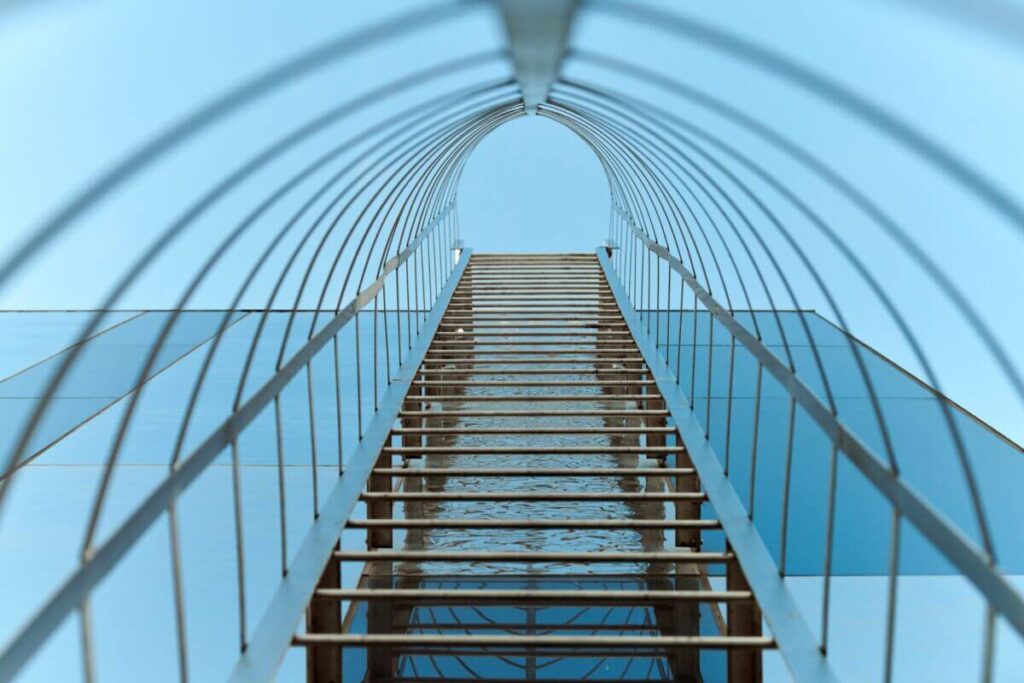
Planting Streets and Pathways:
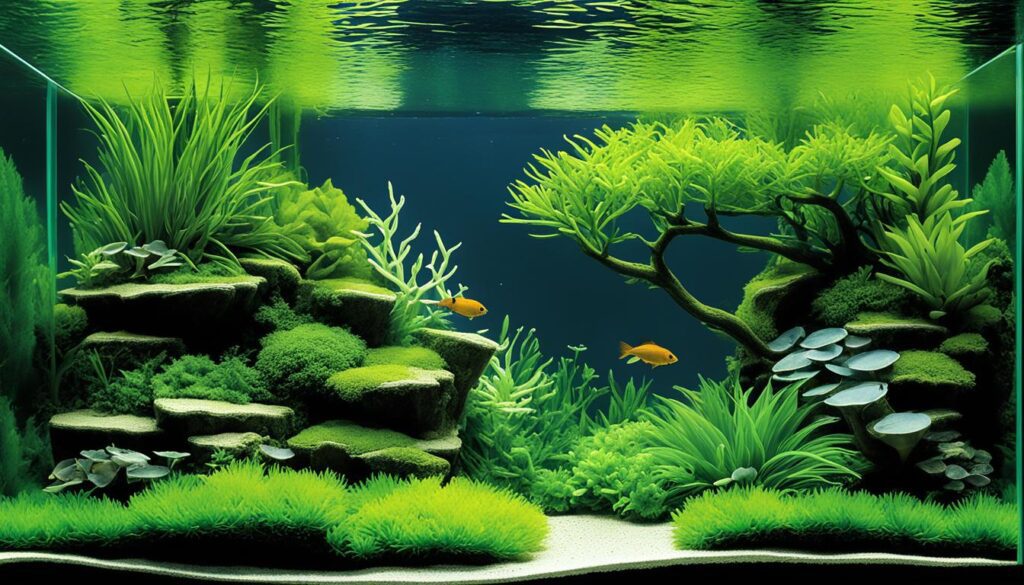
Planting streets and pathways is another critical element of Dutch aquascaping. This involves arranging plants to create clear paths or streets within your tank. These pathways can guide the viewer’s eye through the aquascape and add depth and dimension to the overall design.
Incorporating Hardscape Elements:
Hardscape elements like rocks or driftwood can be incorporated into your plant layout to add visual interest and contrast. These elements can be strategically placed to divide plant groups or create natural boundaries within the aquascape. You can make a harmonious balance between the two aspects by combining hardscape and plants.
If you’re interested in making your own Aquarium Rocks. Check this Article: Introduction to DIY Reef Rocks for Aquariums: Enhancing Your Aquascape.
| Designing Your Plant Layout | Tips |
|---|---|
| Creating a Focal Point | Select a visually striking plant or group of plants as a centerpiece. |
| Planting Streets and Pathways | Arrange plants to create clear paths within the aquascape. |
| Incorporating Hardscape Elements | Add rocks or driftwood to enhance visual interest and create natural boundaries. |
Aquascaping Techniques for a Lush Layout
It would be best to employ specific techniques to achieve a lush and visually striking Dutch aquascape. Here are a few methods that are essential for creating depth and layering in your aquascape:
Layering and Depth in Dutch Aquascapes
Creating a visually captivating Dutch aquascape relies heavily on mastering layering and depth. You can achieve a sense of dimension and movement in your aquascape by strategically arranging foreground, midground, and background layers, incorporating hardscape elements, and introducing floating plants.
Creating Foreground, Midground, and Background Layers
One of the critical techniques in Dutch aquascaping is creating distinct layers within your aquarium. The foreground layer, located at the front of the tank, typically consists of low-growing plants that develop a sense of depth and perspective. Consider using carpeting plants such as Hemianthus callitrichoides or Glossostigma elatinoides.
The midground layer occupies the middle section of the tank and serves as a transition between the foreground and background. Here, you can incorporate plants of varying heights and textures to add visual interest and depth. Examples include Cryptocoryne species and Echinodorus varieties.
The background layer, positioned at the rear of the aquarium, should feature taller plants that provide a lush backdrop. Utilize species with vertical growth patterns like Vallisneria or Rotala to create a stunning visual effect and enhance the overall depth of your aquascape.
Using Hardscape Elements to Add Depth
In addition to plants, incorporating hardscape elements such as rocks and driftwood can significantly enhance your Dutch aquascape’s depth and overall aesthetics.
Strategically placing larger rocks or driftwood in the midground or background layers can create focal points and break the visual monotony of the plant-dominated layout. These elements can also guide the viewer’s eyes, leading them deeper into the aquascape and amplifying the depth perception.
Incorporating Floating Plants to Create Depth and Movement
Floating plants are an excellent tool for adding depth and movement to your Dutch aquascape. Their ability to create a dynamic surface layer adds a captivating visual element to the overall composition.
Consider incorporating floating species such as Duckweed or Water Lettuce to create natural shadows and simulate the effect of dappled sunlight shining through the water’s surface. This adds depth and creates a more realistic and visually engaging aquascape.
| Foreground Layer | Midground Layer | Background Layer |
|---|---|---|
| Hemianthus callitrichoides | Cryptocoryne species | Vallisneria |
| Glossostigma elatinoides | Echinodorus varieties | Rotala |
Lighting and Fertilization Techniques
Determining the Right Lighting for Your Aquascape
Proper lighting plays a crucial role in the success of a Dutch aquascape. It not only enhances the visual appeal of the plants but also supports their growth and overall health. When selecting lighting for your aquascape, consider the specific requirements of your chosen plants. Some plants thrive in brighter light conditions, while others prefer lower intensity.
To determine the proper lighting for your aquascape, assess factors such as the tank size, plant species, and the light requirements they need. LED lights are popular among aquascapers due to their energy efficiency and customizable settings. Additionally, consider the colour temperature of the lights. Warmer white lights (around 5000K) promote more compact and red-coloured growth, while more astonishing white lights (around 6500K) promote lush and green growth.
Choosing the Right Fertilizers and Supplements
Proper fertilization is essential to provide the necessary nutrients for the plants to thrive in a Dutch aquascape. To choose the suitable fertilizers and supplements, consider the specific requirements of your plants and the nutrient deficiencies you may observe. Macronutrients such as nitrogen, phosphorus, and potassium are essential for plant growth, while micronutrients like iron and magnesium are also crucial.
Various fertilizers are available, including liquid fertilizers, root tabs, and nutrient-rich substrates. Research the specific needs of your plants and select fertilizers that provide a balanced supply of nutrients. It is also advisable to monitor nutrient levels regularly using testing kits to ensure the optimal health of your plants.
Implementing a Proper Lighting and Fertilization Schedule
A consistent lighting and fertilization schedule is vital to maintaining a healthy and balanced Dutch aquascape. The duration and intensity of illumination should mimic natural daylight cycles, typically ranging from 8 to 10 hours per day. This helps prevent algae growth and provides plants with adequate light for photosynthesis.
When it comes to fertilization, consider the needs of your plants and the specific fertilizers you are using. Follow the manufacturer’s instructions and guidelines for dosing and application frequency. Some aquascapers prefer to dose fertilizers daily or every other day, while others may choose a weekly or bi-weekly schedule. Regular water changes are also essential to prevent the accumulation of excess nutrients and maintain the overall health of the aquatic environment.
| Lighting Techniques | Fertilization Techniques |
|---|---|
| 1. Use adjustable LED lighting fixtures to customize the intensity and color temperature. | 1. Use adjustable LED lighting fixtures to customize the intensity and colour temperature. |
| 2. Use a timer to ensure consistent lighting duration and mimic natural daylight cycles. | 2. Follow a regular dosing schedule to maintain nutrient levels for optimal plant growth. |
| 3. Consider the specific light requirements of your plant species and adjust accordingly. | 3. Monitor nutrient levels with testing kits and adjust fertilization as needed. |
| 4. Position the lights to provide uniform coverage throughout the aquascape. | 4. Consider supplementing with root tabs or nutrient-rich substrates for rooted plants. |
| 5. Regularly clean the light fixtures to prevent the accumulation of algae or debris. | 5. Conduct regular water changes to maintain water quality and remove excess nutrients. |
Maintenance Tips for Dutch Aquascapes
Pruning and Care for Plant Health
Proper pruning and care are essential for maintaining the health and vitality of your plants in a Dutch aquascape. This section will guide you through the steps to ensure your plants thrive.
Trimming Overgrown Plants
In a Dutch aquascape, plants can sometimes thrive and become overgrown, compromising the visual balance and overall aesthetics. To prevent this, regular trimming is necessary. Use sharp aquascaping scissors or pruning tools to trim the excess growth carefully. This maintains the desired shape and size of the plants and promotes healthier and more robust growth.
Regularly Removing Dead or Decaying Plant Matter
Dead or decaying plant matter can negatively impact your Dutch aquascape’s water quality and overall health. It is crucial to remove any dead or decaying leaves, stems, or other plant debris regularly. This helps prevent nutrient imbalances, reduces the risk of algae growth, and ensures a clean and vibrant aquascape environment.
Monitoring and Maintaining Water Parameters
Monitoring and maintaining appropriate water parameters is vital for the well-being of your plants. Dutch aquascapes require stable conditions to support optimal growth. Regularly test and adjust parameters such as pH, temperature, and nutrient levels to ensure they fall within the ideal range for your chosen plant species. Additionally, maintaining proper water circulation and implementing a suitable fertilization routine will further contribute to the health and vigour of your plants.
| Parameter | Ideal Range |
|---|---|
| pH | 6.5 – 7.5 |
| Temperature | 22 – 26°C (72 – 79°F) |
| Nutrient Levels | Optimal levels dependent on plant species |
Algae Management Strategies
Managing algae is crucial when it comes to maintaining a beautiful Dutch aquascape. Algae can quickly overrun your tank and detract from the aesthetic appeal of your aquascape. Fortunately, there are several strategies you can implement to keep algae growth under control and maintain a healthy aquatic environment.
Maintaining Proper Nutrient Balance
One of the most effective ways to prevent excessive algae growth is to maintain a proper nutrient balance in your tank. Algae thrive in the presence of excess nutrients like nitrates and phosphates. To keep these levels in check, it’s essential to establish a regular water testing and maintenance routine.
Regular water changes and nutrient-absorbing media can help remove excess nutrients from the water column. Additionally, a well-balanced fertilization regime that meets the needs of your aquatic plants without overfeeding them can help prevent nutrient imbalances that promote algae growth.
Controlling Lighting and Photoperiod
Lighting plays a significant role in algae growth. While plants require adequate photosynthesis, excessive light or long photoperiods can trigger algae blooms. To control algae growth, it’s essential to choose the right type of lighting and carefully manage the duration and intensity of the light.
High-quality LED lights with adjustable intensity and colour spectrum options are ideal for Dutch aquascapes. It is recommended to provide a photoperiod of 8 to 10 hours per day to balance meeting plants’ lighting needs and minimizing algae growth. Implementing a timer for your aquarium lighting can help maintain consistent and controlled photoperiods.
Using Algae Eaters and Clean-Up Crews
Introducing algae-eating organisms and a clean-up crew to your aquarium can be beneficial in keeping algae under control. Fish species such as Siamese algae eaters, Otocinclus catfish, and certain species of snails like Nerite snails can help consume algae and save it in check.
Clean-up crews consisting of shrimp, like Amano shrimp, and small invertebrates, like dwarf freshwater crayfish, can also help manage algae. They scavenge for leftover food and detritus, reducing the available nutrients that algae feed on. However, it’s essential to consider the compatibility of these organisms with your aquascape and their specific care requirements before introducing them to your tank.
You can effectively manage algae growth in your Dutch aquascape by maintaining a proper nutrient balance, controlling lighting and photoperiod, and utilizing algae eaters and clean-up crews. These strategies will help preserve the aesthetics and health of your aquascape, allowing you to enjoy its beauty to the fullest.
Inspirational Dutch Aquascape Designs
In this final section, I would like to showcase the incredible beauty of Dutch aquascapes and provide inspiration for incorporating Dutch principles into small tanks. Whether you’re a beginner or a seasoned aquascaper, these designs will surely amaze you.
Incorporating Dutch Principles in Small Tanks
Even if you have a small tank, you can still create a stunning Dutch aquascape. Here are some tips to help you incorporate Dutch principles into small tanks:
Choosing Appropriate Plants for Limited Space
Select plant species suitable for small tanks, such as compact stem plants, carpeting plants, and small-sized foreground plants. This will ensure that your aquascape looks proportional and well-balanced.
Designing a Miniature Dutch Aquascape
Scale down the elements of a traditional Dutch aquascape to fit your small tank. Create a focal point, incorporate plant groupings, and maintain a harmonious balance. Remember to consider each chosen plant species’ growth habits and space requirements.
Implementing Maintenance Strategies for Small Tanks
Regular pruning and careful maintenance are vital for the long-term success of a small Dutch aquascape. Keep an eye on plant growth and trim accordingly to prevent overcrowding. Maintain proper water parameters and nutrient levels to ensure the health of your plants.
Case Studies of Award-Winning Dutch Aquascapes
In this section, we will explore some exceptional award-winning Dutch aquascapes that beautifully showcase the principles and aesthetics of this style. These aquascapes are prime examples of the incredible artistry and creativity that can be achieved through Dutch aquascaping.
Aqua Dolce by Oliver Knott
Aqua Dolce, created by renowned aquascape artist Oliver Knott, is a breathtaking Dutch aquascape embodying this style’s essence. Aqua Dolce is a true masterpiece with its lush carpet of vibrant green plants, meticulously placed hardscape elements, and carefully balanced colour palette.
Knott’s meticulous attention to detail is evident in the ingenious placement of plants and rocks, creating a sense of movement and harmony. The vibrant vegetation and striking contrast between foreground and background layers make Aqua Dolce a captivating and awe-inspiring Dutch aquascape.
Silent Nature by Filip Petru
Silent Nature, designed by aquascaper Filip Petru, is a stunning example of the Dutch aquascape style. This aquascape demonstrates Petru’s skilful use of height variation and contrasting plant groups to create depth and visual interest.
The dynamic combination of tall stem plants, vibrant carpeting plants, and strategically placed rock formations gives Silent Nature a sense of natural beauty and tranquillity. The expert balance of colours and textures enhances the overall aesthetics of the aquascape, resulting in a captivating and harmonious composition.
The Forgotten Forest by Bart Laurens
The Forgotten Forest, an awe-inspiring Dutch aquascape by Bart Laurens, showcases the beauty of a lush, densely planted layout. This captivating aquascape features a harmonious blend of various plant species, creating a vibrant and captivating underwater forest.
Laurens’ meticulous attention to detail is apparent in the careful placement of plants of varying heights and leaf sizes, which adds depth and visual interest to The Forgotten Forest. The skilful arrangement of hardscape elements, coupled with the strategic use of light and shadow, enhances the overall ambience of the aquascape.
These award-winning Dutch aquascapes inspire anyone seeking to create a stunning and captivating aquatic masterpiece. By studying the artistry and techniques employed in these aquascapes, enthusiasts can gain valuable insights and ideas for their Dutch aquascaping projects.
Incorporating Dutch Principles in Small Tanks
Regarding Dutch aquascaping, you don’t need a large tank to create a stunning display. Even with limited space, you can still incorporate the principles of Dutch aquascape design into your small tank. Here are some tips to help you achieve a miniature Dutch aquascape that is beautiful and manageable.
Choosing Appropriate Plants for Limited Space
In a small tank, plant selection is crucial. Opt for plants that have compact growth habits and won’t overcrowd the tank. Some suitable choices for small Dutch aquascapes include Staurogyne repens, Cryptocoryne parva, and Rotala rotundifolia ‘Green’. These plants will provide the lush and vibrant look characteristic of Dutch aquascapes while remaining in scale with your tank’s size.
Designing a Miniature Dutch Aquascape
When planning your miniature Dutch aquascape, focus on creating a sense of depth and balance. Use hardscape elements like rocks or driftwood to add interest and create visual focal points. Remember to incorporate the classic Dutch aquascape elements, such as distinct plant groups and strong colour contrast, even on a smaller scale. By carefully arranging your plants and hardscape, you can achieve a captivating layout that mimics the beauty of larger Dutch aquascapes.
Implementing Maintenance Strategies for Small Tanks
Maintaining a small Dutch aquascape requires attention to detail. Since small tanks are more prone to fluctuations in water parameters, regular monitoring is essential. Perform regular water tests and make necessary adjustments to ensure optimal plant conditions.
Additionally, regular pruning and maintenance are crucial to prevent overcrowding and maintain the overall health of your mini Dutch aquascape. Implementing these maintenance strategies can keep your small tank thriving and visually stunning.
FAQ
What makes Dutch aquascaping unique?
Dutch aquascaping is known for its plant-heavy layouts and meticulous attention to detail, with a focus on plant variety and contrast, strategic use of color and texture, and emphasis on symmetry and balance.
What are the key elements of a Dutch aquascape?
Key elements of a Dutch aquascape include strong contrast between plant groups, distinct groups and clear layout, and height and leaf size variation.
Which plants are commonly used in Dutch aquascapes?
Some of the top plants commonly used in Dutch aquascapes include Rotala rotundifolia, Ludwigia inclinata Pantanal, Alternanthera reineckii ‘mini’, Cryptocoryne wendtii, and Staurogyne repens.
How can I design the plant layout for my Dutch aquascape?
When designing your plant layout, you can create a focal point, plant streets and pathways, and incorporate hardscape elements for added interest.
What techniques can I use to create a lush Dutch aquascape?
To create a lush Dutch aquascape, you can employ techniques such as creating foreground, midground, and background layers, using hardscape elements to add depth, and incorporating floating plants to create depth and movement.
How should I maintain my Dutch aquascape?
Proper maintenance for a Dutch aquascape includes pruning and caring for plant health, as well as implementing strategies for managing algae growth.
How do I prune and care for the plants in my Dutch aquascape?
Pruning and care for plant health in a Dutch aquascape involves trimming overgrown plants, regularly removing dead or decaying plant matter, and monitoring and maintaining water parameters.
What are some strategies for managing algae growth in a Dutch aquascape?
Strategies for managing algae growth in a Dutch aquascape include maintaining proper nutrient balance, controlling lighting and photoperiod, and using algae eaters and clean-up crews.
Can I create a Dutch aquascape in a small tank?
Yes, you can incorporate Dutch principles in small tanks by choosing appropriate plants for limited space, designing a miniature Dutch aquascape, and implementing maintenance strategies suitable for small tanks.


